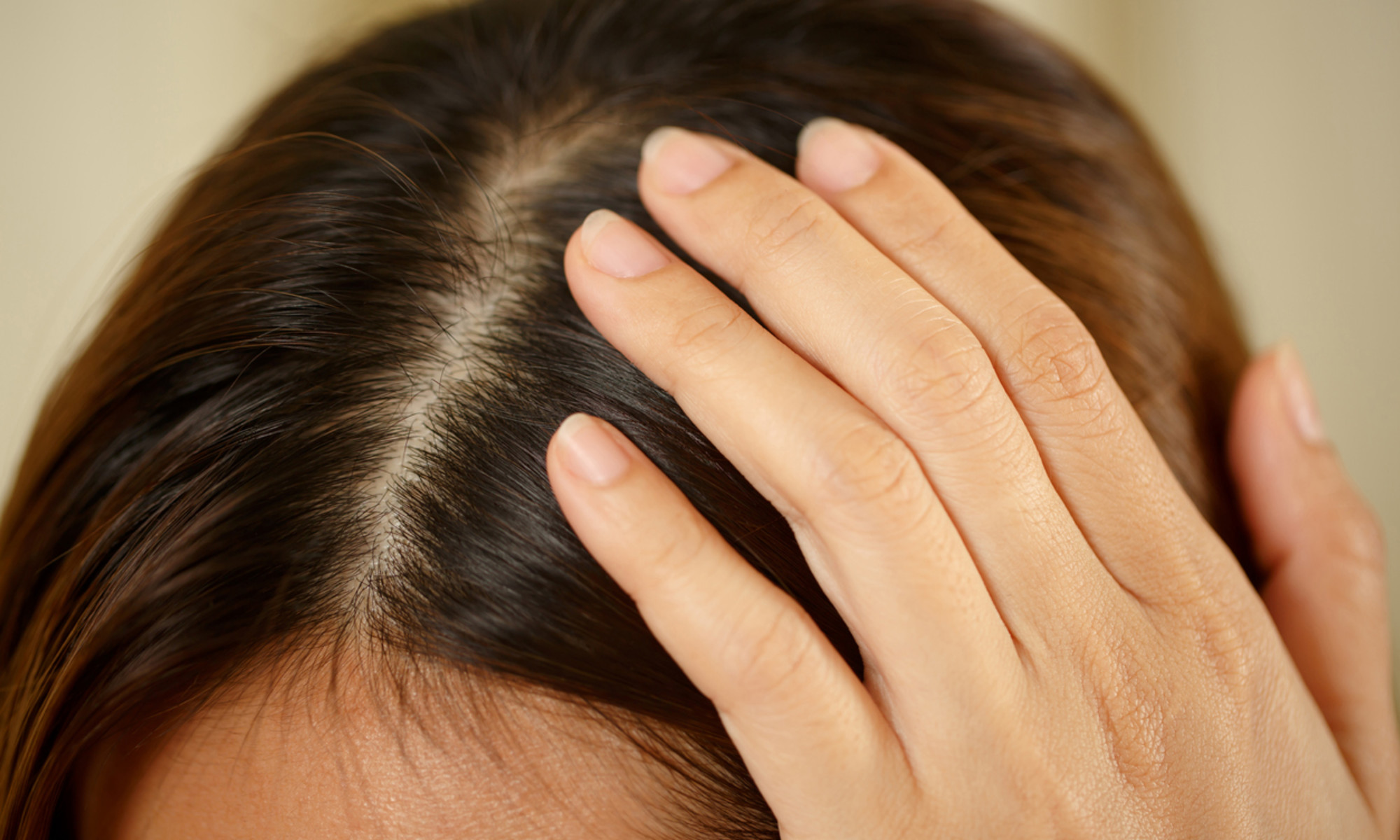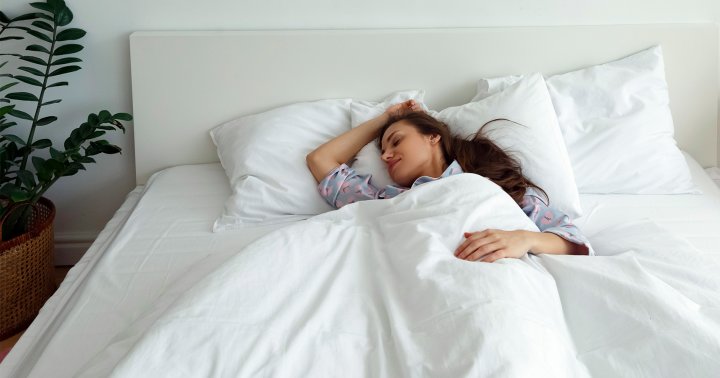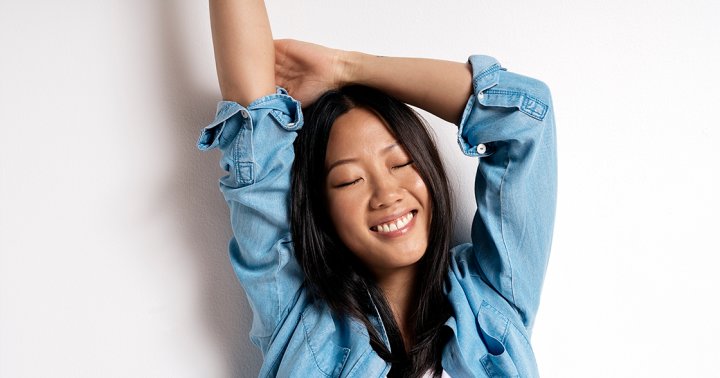Got An Itchy Scalp? Try This Easy DIY Remedy To Soothe Your Roots ASAP
Having an itchy scalp is annoying, to say the least.


mbg Assistant Beauty Editor
mbg Assistant Beauty Editor
Hannah Frye is the Assistant Beauty Editor at mindbodygreen. She has a B.S. in journalism and a minor in women’s, gender, and queer studies from California Polytechnic State University, San Luis Obispo. Hannah has written across lifestyle sections including health, wellness, sustainability, personal development, and more.
Image by istock/Rattankun Thongbun March 10, 2023 Our editors have independently chosen the products listed on this page. If you purchase something mentioned in this article, we may Having an itchy scalp is annoying, to say the least. Not only is this area difficult to treat, but there are so many compounding triggers that it can take a full-fledged investigation to find out what’s causing the irritation. Most of the time, you can attribute an itchy scalp to dandruff, product buildup, or dryness, to name a few culprits. Sure, you can buy expensive creams and serums to ease the itch, but there are plenty of DIY remedies available, too. To come, a few quick and easy at-home treatments to test out the next time your scalp needs the help. 
Advertisement
This ad is displayed using third party content and we do not control its accessibility features.
First up, we have the well-known skin soother: aloe vera—but preferably from the leaf, not a bottle, if you can find it. “Fresh aloe vera is best, as the medicinal properties deteriorate over time," board-certified dermatologist Cynthia Bailey, M.D., previously told mbg. "Many commercial aloe vera gels and juices contain other ingredients such as preservatives." You can find 100% pure aloe vera gel on the market; just make sure it doesn't contain any unnecessary fragrances or dyes. Aloe vera also has anti-inflammatory properties, "so it may benefit those with scalp inflammation and irritation," board-certified dermatologist Gary Goldenberg, M.D., once shared with mbg. To sum it all up: Fresh aloe on the scalp can be a particularly soothing treatment for anyone experiencing dryness, flakes, or irritation. Plus, those with a highly sensitive scalp can use aloe vera without worry of irritation from fragrance or astringents.How to use it:
The easiest way to use aloe vera is to whip up a simple scalp mask. Here’s the how-to:
Advertisement
This ad is displayed using third party content and we do not control its accessibility features.
Next, we have coconut oil. This ingredient has been loved for centuries for its hydrating properties, now used in countless face, body, hair, and scalp products. It’s a heavy occlusive moisturizer, which means it locks in moisture on-site.
“Coconut oil has also been traditionally used as a natural antimicrobial product. This is thanks to key ingredients, such as lauric acid,” says biomedical doctor, hair expert, and founder of hair care brand Alodia, Isfahan Chambers-Harris, Ph.D. “The oil may therefore help combat malassezia, the fungus commonly known to contribute to dandruff."
Not to mention, it’s great for your strands as well. Since coconut oil has a low molecular weight1, it can penetrate easily into the hair shaft and absorb better than other common oils.
This ingredient is a great choice for those with extra dry scalps or dehydrated strands in need of a simultaneous revamp. It can be a bit heavy, though, so those with fine hair or prone to oily scalps may want to opt for a lighter oil, like jojoba.
How to use it:
This oil is best used on the scalp as a massaging aid. Here’s the how-to:
Advertisement
This ad is displayed using third party content and we do not control its accessibility features.
While apple cider vinegar is best known for its gut health benefits, it’s a wonderful ingredient to add to your hair care routine, too. “Like aloe vera, ACV can lower pH, helping to bring the hair and scalp health back into balance,” Chambers-Harris notes.
In addition, research suggests ACV may help with dandruff caused by yeast on the scalp. "ACV acidity makes a less favorable environment for the yeast and therefore may halt its growth, leading to less flaking," board-certified dermatologist Morgan Rabach, M.D., and co-founder of LM Medical NYC, once said about the ingredient.
ACV can also provide gentle exfoliation, as it naturally contains lactic acid. This AHA is a particularly beneficial acid for skin health, as it can act as humectant as well. This means it can pull in water and hydration while exfoliating the epidermis.
So to sum it all up, ACV can balance your scalp’s pH, ease dandruff, and provide gentle exfoliation—addressing many of the potential triggers of an itchy scalp in a single go.
However, you should always dilute the vinegar first before applying (catch our recipe below); you never want to put the acidic substance directly on your scalp. Those with a hypersensitive scalp may also want to patch-test this ingredient first, as it may be slightly irritating.
How to use it:
This DIY ACV hair rinse is one of the quickest and easiest itchy scalp remedies you can find. Here’s the how-to.
Advertisement
This ad is displayed using third party content and we do not control its accessibility features.
Next up, a remedy for oily and itchy scalps: “Tea tree oil has natural anti-fungal properties that can help with itchy scalp,” Chambers-Harris explains. Plus, it may help ease dandruff as well.
One study found that using a shampoo that contained tea tree oil was an effective way to improve mild to moderate dandruff2. The group that used the oil for four weeks showed a 41% improvement in symptoms (less itchiness, scaliness, etc.) compared to the placebo group, which had an 11% improvement.
However, this oil is incredibly potent, which is why you should always mix it with carrier oil or another hair product. If you don’t, you risk heightened irritation on the scalp, which could increase the itch you’re already experiencing.
How to use it:
To ensure you don’t irritate your scalp, simply add a few drops of tea tree oil to your shampoo puddle in your hand when your scalp is craving a detox—yes, it really is that easy. Or you can opt for one of these pre-mixed tea tree shampoos.
Advertisement
This ad is displayed using third party content and we do not control its accessibility features.
We’ve mentioned jojoba oil a few times as a carrier oil, but it serves as a great scalp treatment á la carte as well. “Jojoba oil is an oil-like wax that is similar to the oil your scalp produces called sebum,” Chambers-Harris explains.
“Because of this, it's a great moisturizer for the scalp and can lower inflammation, decreasing the itchiness,” she adds. Not to mention, it’s noncomedogenic (read: won’t clog your pores), so it’s safe to use for anyone prone to scalp or hairline breakouts.
Plus, jojoba oil can also improve strands' resistance to breakage3—and with less breakage comes fuller, longer hair.
How to use it:
Due to its ability to hydrate the skin and strengthen the hair, your best bet for using jojoba oil is an overnight scalp and hair treatment. Here’s the how-to:
Avocado oil deserves an honorable mention: It retains all the vitamins and nutrients4 from fresh avocado (other than vitamins B and C, which are water-soluble), and it rapidly absorbs into the skin and hair without weighing down the strands. These properties make it superb for a stimulating scalp massage.
Or, you can always use a full avocado: This is a better idea for those looking to do a full scalp and hair mask in one go. We have loads of avocado hair masks recipes here, if you’re curious.
How to use it:
For a scalp-only treatment, follow the same protocol as many of the other oil-based remedies. Apply the avocado oil to your scalp or your fingers and massage it in pre-wash. You can let it sit for 15 to 20 minutes or rinse it out immediately—whatever you have time for.
If you’re short on time or you want an on-the-go option, let it be rosewater. “Rosewater has anti-inflammatory properties, which can help to lower the inflammation of the scalp,” Chambers-Harris notes.
Not to mention, you can use rosewater on your skin as well, making this DIY multipurpose.
How to use it:
You can buy pure rosewater at the store or make your own. Here’s how:
Yogurt is a staple base product in the world of DIY skin care, and the same goes for scalp treatments. Yogurt naturally contains a fair share of lactic acid, a chemical exfoliant that gently sloughs dead skin cells.
And while Greek yogurt tends to have the best consistency for scalp masks, you can also choose coconut or soy yogurt for a vegan option—just try to find one that includes added probiotics, so your skin microbiome can still reap the benefits.
How to use it:
You can certainly use yogurt alone as a pre-wash scalp treatment, or you can mix it with some of the nourishing ingredients mentioned above like avocado oil, aloe vera, or ACV. Simply apply your custom blend to your scalp and let it set for 10 to 15 minutes. Then rinse it out and follow up with your normal hair care routine.
Last but certainly not least, we have argan oil. This one has a similar function as jojoba oil in terms of scalp and hair benefits but will induce more shine than many other oils.
Again, anyone with oily roots may want to skip this treatment and opt for something lighter, like an aloe vera mask, rosewater toner, etc.
How to use it.
You’ll want to give the argan oil ample time to soak into your scalp and strands, so it's best to use it as an overnight treatment.
Itchy scalp causes.
When you’re looking for the best itchy scalp remedy for your situation, it’s probably a good idea to determine the root cause. Take a close look at your scalp in the mirror and check for any of the following signs:
What home remedies you shouldn't use.
As a quick reminder, not every home remedy is safe for the scalp. Below, a few remedies to consider skipping.
FAQ
Why is my head itching so badly?
The most common causes of itchy scalp include dryness, dandruff, and product buildup. You might also be dealing with an allergic reaction from a hair care product, if you've introduced one into your routine recently.
What helps an itchy scalp ASAP?
To ease an itchy scalp quickly, you can use fresh aloe vera, Greek yogurt, oils like jojoba and argan, or add tea tree oil to your shampoo.
Why is my head so itchy, but I don't have lice or dandruff?
Apart from lice and dandruff, an itchy scalp can be caused by dryness, product buildup, and overall inflammation.
Best itchy scalp products.
Not in the mood to DIY? No problem: Check out these formulas below, all of which are A+ for relieving itch.
The takeaway.
An itchy scalp is most often caused by dryness, dandruff, or product buildup. To ease the irritation at home, call upon fresh aloe vera, diluted tea tree oil, diluted apple cider vinegar, or nourishing oils like jojoba and argan. If the DIY options just aren’t for you, you might want to consider adding a clarifying shampoo to your routine instead—here’s a list of our favorites.

 Tfoso
Tfoso 






























